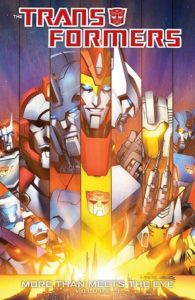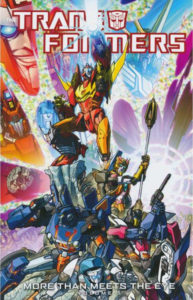As I work on the sequel to Unwilling Souls, I find myself having to confront the question of serialization versus episodic storytelling. My admission up front: I love serialized stories. Aside from sitcoms, I don’t really watch any television that doesn’t feature at least some element of serialization. While I realize there’s a certain comfort to be had in procedurals or episodic series, they will never be my first choice, precisely for that reason. Very little ever changes.
The idea that each installment of a story builds into something greater has always appealed to me. And in today’s age of serialized TV and prestige series, it’s hard to remember there was ever anything else. But networks used to look down on serialized storytelling. And if you do a little digging, it’s not hard to see why. In this post, I’ll take you through three series’ attempts at serialization across a couple of different timeframes, what worked about it and what didn’t.
The X-Files: You might call this a proto-serialized drama, or at least a drama with a central mystery at its core. For cave-dwellers or young people, the X-Files featured FBI agents Fox Mulder and Dana Scully assigned to solve the paranormal cases the FBI normally tried to downplay or ignore. Most episodes fell into a sort of “monster of the week” episodic pattern. But several times each season, including the beginning and the end, the series’ overarching story would come to the forefront: that of Mulder’s obsessive quest to uncover the truth behind alien abductions and the government’s cover-up, including the abduction of his sister when they were both children. Early on the series’ run, I (and most) enjoyed the “monster of the week” episodes but really looked forward to the alien storyline, eagerly awaiting each new installment’s advancement of the central mystery.
As the series aged, however, it became more and more apparent that the showrunners didn’t have an overall plan for the mystery, and were just dragging it out as long as possible, allowing it to grow more and more elaborate and nonsensical. By the time the lead actors were bowing out of the show save for guest appearances, it was the monster of the week episodes that still maintained a semblance of quality, while the serialized overarching story had become a mess that would obviously never reach a satisfactory conclusion. That’s the major advantage episodic TV will always have over serial TV. Each installment has a beginning a middle and an end, all neatly contained in an hour of the viewer’s time. Serialized stories have to work extra hard to give installments the feel of a miniature story arc while simultaneously advancing the overarching plot. It adds a dimension of complexity to the writing.
The X-Files finale was all but incomprehensible, and while the recent short 10th season proved the actors still bring chemistry to their characters, the alien storyline remains as opaque as ever. Ultimately, the X-Files serves as a cautionary tale to future shows about being careful with open-ended mysteries. The lesson of the X-Files: A mysterious series mythos requires, if not exact planning to the last detail, at least some forethought unless you are a virtuoso of retconning.
Lost: Though this isn’t in chronological order, The X-FIles leads us naturally into Lost, the show that learned the most from the X-Files. Lost begins with a plane crash which a seemingly miraculous number of people survive. The tropical island onto which they’ve crashed is filled with all kinds of strange, wondrous and terrifying things, like polar bears, mysterious hatches buried in the jungle, and the eerie people already living on the island, creepily known only as the Others. Like its spiritual predecessor, Lost builds its show around a central mystery: What is the Island? Unlike the X-Files, while there are episodes that don’t advance the main plot, quite a few of them in the first three seasons, nearly every episode takes place on the island itself, so there’s no forgetting the main, serialized plot.
Lost’s first season was utterly captivating, introducing us to the characters by giving each one or more episodes focused on them and their backstory while simultaneously advancing the plot. The problems didn’t really arise until Season 2 and then, even more, Season 3. It turns out that the show-runners (the show was conceived by All-SFF Team Producer J.J. Abrams but he was not involved beyond the pilot episode) did not have any more idea where the story was going than the creator of the X-Files did or, perhaps more importantly, how long they would have to stall giving out answers to their mysteries. But they learned from history.
By the time the third season was floundering in stall-tactics designed to drag out the mysteries toward an unknown series end date, the producers made the bold decision of approaching the network with a proposal to last three more 16 episode seasons and then end. Given the fact that the show was a ratings juggernaut, give props to ABC for agreeing to the schedule. From that moment on Lost became much more focused and fast-paced. Gone were the stalling episodes of Jack getting a tattoo. Each episode now drove the plot inexorably forward, and though the ending of the series was controversial to many, no one can deny that it was an ending. The lesson? If you’re telling a serialized story, plan for it to have a beginning, middle and end so that you pace correctly.
Battlestar Galactica (2004 Reboot): Speaking of controversial endings, BSG was heavily serialized from beginning to end, almost without exception. Rare was an episode that could be called truly standalone. Like Lost before it, the show was built around a relatively simple premise. The Cylons (human-hating robots, some of which are indistinguishable from humans) have destroyed human civilization in retaliation for decades-old mistreatment, and the entire remains of the human race comprise rag-tag fleet of spacecraft looking for the last habitable world in their records: the mythical colony of Earth.
From the beginning of the show, things like resource conservation, the problem of governance when your entire governmental apparatus is destroyed, and “the enemy within” became staple elements of the show’s plot. Every episode relentlessly drove the main story forward … with one exception. During Season 3, Syfy (then mercifully known as the SciFi Network) tried to make the show more viewer friendly, which translates to more episodic. See, the reason networks used to hate serialized stories is that while they tend to keep early fans watching, they make it difficult for new fans to get into shows because of all the backstory they’ve missed. SciFi wanted Season 3 to be easier to get involved which, resulting in a season which, while it has some major highs (New Caprica and the Adama Maneuver, anyone?) it also resulted in some disjointed episodes that feel unfocused and unconnected to the larger story.
If this had been the series modus operandi from the start, nothing would have seemed amiss. As it was, the change was jarring. Fortunately, the fourth and final season was allowed to close out the show (once, again that this was the final season was planned in advance) on the show-runners terms. For the record, I enjoyed both BSG’s and Lost’s controversial endings. The lesson we can take from this is that whatever precedent you set between installments, it is best to keep to it throughout the run of your series.
A serialized approach to storytelling is a great way to grab viewers (or readers) early and make sure they stay invested. That said, there are pitfalls to the approach as well as benefits to working in some episodic elements as well.
About the Author: Gregory D. Little
Rocket scientist by day, fantasy and science fiction author by night, Gregory D. Little began his writing career in high school when he and his friend wrote Star Wars fanfic before it was cool, passing a notebook around between (sometimes during) classes. His first novel, Unwilling Souls, is available now from ebook retailers and trade paperback through Amazon.com. His short fiction can be found in The Colored Lens, A Game of Horns: A Red Unicorn Anthology, and the upcoming Dragon Writers Anthology. He lives in Virginia with his wife and their yellow lab.
You can reach him at his website (www.gregorydlittle.com), his Twitter handle (@litgreg) or at his Author Page on Facebook.


